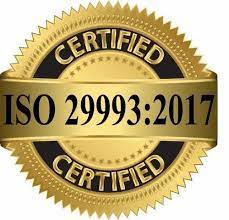
|
|
This process can be applied to any situation where you need to make an important decision. If you follow these ten basic steps, you will find yourself making wiser decisions in your professional as well as your personal life. · Define, as specifically as possible, what the decision is that needs to be made. Is this really your decision or someone else's? Do you really need to make a decision? (If you do not have at least two options, there is no decision to be made.) When does the decision need to be made? Why is this decision important to you? Who will be affected by this decision? What values does this decision involve for you? · Write down as many alternatives as you can think of. Brainstorm as many different alternatives as you can imagine. Let your imagination run free and try not to censure anything; this is not the time to be judgmental. Just be sure to write everything down. · Think where you could find more information about possible alternatives. If you only come up with a few alternatives, you may want to get more information. Additional information generally leads to more alternatives. Places where you can look for the information you need include friends, family, clergy, co-workers, state and federal agencies, professional organizations, online services, newspapers, magazines, books, and so on. · Check out your alternatives. Once you have a list of alternatives, use the same sources of information to find out more about the specifics of each option. You will find that the more information you gather, the more ideas will pop into your head. Be sure to write these down and check them out too. · Sort through all of your alternatives. Now that you have your list of alternatives, it is time to begin evaluating them to see which one works for you. First, write down the values that would come into play for each alternative. Second, look for the alternatives which would allow you to use the greatest number of your values. Third, cross the alternatives off the list which do not fit into your personal value framework. · Visualize the outcomes of each alternative. For each remaining alternative on your list, picture what the outcome of that alternative will look like. Here, too, it helps if you write out your impressions.
|
|
|
|
|
|
|
|
|
"We now accept the fact that learning is a lifelong process of keeping abreast of change. And the most pressing task is to teach people how to learn." -- Dr. Peter Drucker, Austrian-born American management consultant, educator
|
Home Home Certifications AMC® Training Council Continuing Ed Awards Careers Board Government Jobs Membership Ethics Handbook Events Benefits Exam Sample Omicron Chi News Accredited Degrees Management Degrees Accounting Degrees Financial Analyst Degrees Human Resource Degrees Application Links Disclaimer


